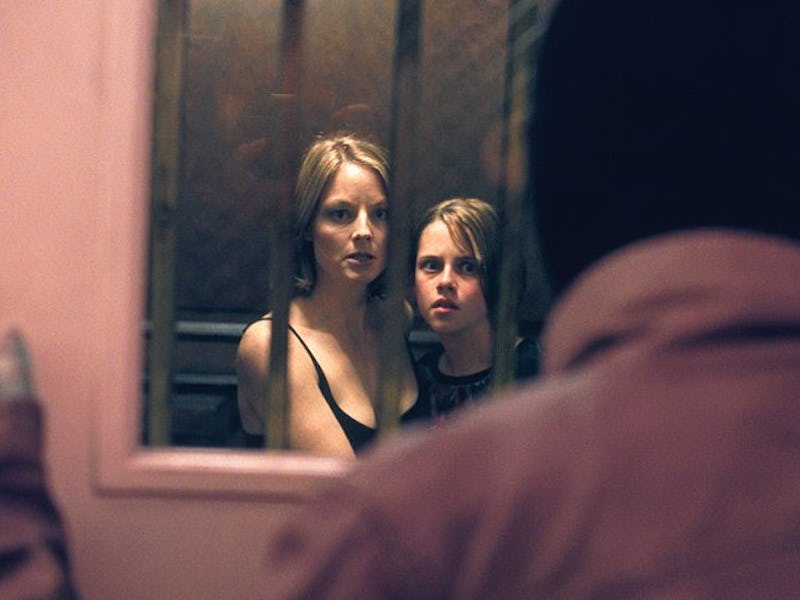20 years ago, David Fincher made his most underrated psychological thriller
Forgotten amid his more famous films, this taut feminist thriller deserves a second look.

David Fincher is an auteur of dark and deceptive cinema. His stories are compelling, his characters conniving and often tasked with unraveling morbid mysteries from dingy police stations, basements, and dorm rooms. The tales are twisted, their endings unpredictable, but one factor can almost always be expected: Testosterone.
The good guys, the bad guys, they’re all men. His early filmography is unmistakably masculine, featuring about two to four male leads in high-intensity, high-stakes environments. There’s no doubt that Fincher has the ability to create and dissect a riveting story, but in his early days, those stories were sausage fests. Fight Club, Se7en, The Social Network, and Zodiac, the first films that one tends to associate with Fincher, are engrossing, but the few women who exist in them seem to only do that — exist.
In Fight Club, we mostly get to know Helena Bonham Carter’s character through her relationship to The Narrator, a coupling that’s more aesthetically pleasing than romantically satisfying. In Se7en, Gwyneth Paltrow’s character arc consists of lying in bed, making dinner, and getting murdered. Her death is shocking, not because of any established interest in her character, but because we as an audience had forgotten about her. In The Social Network, the female characters have to labor through dating Mark Zuckerberg. The only women in Zodiac, apart from a rather languid Chloë Sevigny, are the ones who are quickly killed, leaving Jake Gyllenhaal to do the emotional heavy-lifting.
There are some incredible exceptions that came later: The Girl with the Dragon Tattoo and Gone Girl both have gripping, female-driven narratives. Their leading ladies are troubled, but both display interesting portrayals of abuse survivors and their journeys to absolution. Before them there was Alien 3 and then, most forgotten of all, Panic Room. This film almost becomes lost among the ubiquitous, tumultuous masculinity that Fincher’s other films are imbued in. But Panic Room marks a significant shift in his narrative interests, a refinement of his trademark grit and grime, and a refreshing change in POV that dared to reach outside the confines of his typically male modes of storytelling.
Panic Room introduces us to the wealthy, recently divorced Meg (Jodie Foster) and her daughter Sarah (Kristen Stewart), who aren’t even settled into their new Manhattan brownstone before three robbers arrive to unsettle them further. Here we’re presented with a simple concept, but between David Koepp’s enthralling script, Fincher’s meticulous direction, and a superb cast, Panic Room proves itself to be a uniquely unnerving thriller.
Jodie Foster and Kristen Stewart make a compelling — and believable — mother and daughter duo.
Foster and Stewart deserve recognition here. Not only do they look related, but they’re able to evoke badassery and vulnerability with ease. Fincher doesn’t handle them in the way he might usually handle his female characters; they’re not reduced to some combination of mysterious, sexy, and terrifying. They’re perhaps the most normal characters he’s ever put to screen, and yet they’re still intriguing, viable heroes. Foster is reliably sympathetic, and Stewart’s performance proves that she’s always been Oscar-worthy.
When Panic Room is discussed it’s in relationship to post-9/11 paranoia — the paradox of a safe room in a time of danger — but rarely is there any mention of the believable, likable mother-daughter relationship we see in the midst of a “simple” but horrifying scenario. While other films of Fincher’s deal with survival, the way endurance is portrayed in Panic Room is powerfully intimate and distinctly feminine.
Protecting themselves from the confusing but inspired trio of Forrest Whitaker, Jared Leto, and Dwight Yoakam, our protagonists constantly outsmart and outlast their villains. Meg and Sarah are fearless, and at every turn have an innovative, death-defying solution. They must endure threats of both physical and psychological violence, and on top of that they have to deal with Leto’s cornrows.
Let’s call the hair... memorable.
As Leto determines, “Women need security,” and it turns out Meg and Sarah’s sense of security doesn’t come solely from their panic room, but from their relationship. Their determination to protect each other far exceeds the skills of the armed robbers, who dismiss Meg and Sarah as easy targets; perhaps due to their apparent privilege, but mostly due to the fact that they’re women. And while the premise of women turning the tables on their attackers isn’t the most groundbreaking today, in 2002, after a series of movies mostly marked by machismo, Panic Room felt like a breath of fresh air and a sip of fresh pulp.
Apart from Alien 3, Panic Room is Fincher’s first serious foray into femininity, and it sticks out in a resumé full of bro-bonding and beefing that sometimes borders a Guy Ritchie-level of homoerotic. The familial relationship depicted here is far more lovable and compassionate than any other Fincher affair, and yet the conflict is just as arduous. It is a suspenseful, edge-of-your-seat thriller with a mother and daughter at its center. It’s exhilarating but tender. It has the slickness of any other Fincher film, but with an added level of warmth and humanity. It may not have any stressed-out men in suits or cool girls to demystify, but it’s just as deserving of celebration as any of Fincher’s other films.
This article was originally published on